Henry Petty-Fitzmaurice, 5th Marquess of Lansdowne
| The Most Honourable The Marquess of Lansdowne KG GCSI GCMG GCIE PC | |
|---|---|
 | |
| Viceroy and Governor-General of India | |
|
In office 10 December 1888 – 11 October 1894 | |
| Monarch | Queen Victoria |
| Preceded by | The Earl of Dufferin |
| Succeeded by | The Earl of Elgin |
| 5th Governor General of Canada | |
|
In office 23 October 1883 – 11 June 1888 | |
| Monarch | Victoria |
| Prime Minister |
Canadian: John A. Macdonald British: William Ewart Gladstone Marquess of Salisbury William Ewart Gladstone |
| Preceded by | Marquess of Lorne |
| Succeeded by | The Lord Stanley of Preston |
| Secretary of State for Foreign Affairs | |
|
In office 12 November 1900 – 4 December 1905 | |
| Monarch |
Queen Victoria Edward VII |
| Prime Minister |
The Marquess of Salisbury Arthur Balfour |
| Preceded by | The Marquess of Salisbury |
| Succeeded by | Sir Edward Grey |
| Personal details | |
| Born |
14 January 1845 London, United Kingdom |
| Died |
3 June 1927 (aged 82) Clonmel, County Tipperary, Ireland |
| Nationality | British |
| Political party | Liberal Unionist |
| Spouse(s) | Lady Maud Hamilton |
Henry Charles Keith Petty-Fitzmaurice, 5th Marquess of Lansdowne KG GCSI GCMG GCIE PC (14 January 1845 – 3 June 1927) was a British statesman who served successively as the fifth Governor General of Canada, Viceroy of India, Secretary of State for War, and Secretary of State for Foreign Affairs. In 1917, during the First World War, he wrote to the press (the "Lansdowne Letter") vainly advocating a compromise peace. He has the distinction of having held senior positions in both Liberal Party and Conservative Party governments.
Early life and career, 1845–1882
The great-grandson of the British Prime Minister Lord Shelburne (later 1st Marquess of Lansdowne), and the eldest son of Henry Petty-Fitzmaurice, 4th Marquess of Lansdowne and his wife, Emily, 8th Lady Nairne, Henry Charles Keith Petty-Fitzmaurice was born in London in 1845. He held the courtesy title Viscount Clanmaurice from birth until 1863 and then the courtesy title Earl of Kerry until he succeeded to the marquessate in 1866. Upon his mother's death in 1895, he succeeded her as the 9th Lord Nairne in the Peerage of Scotland.
After studying at Eton and Oxford, he succeeded his father as 5th Marquess of Lansdowne (in the Peerage of the United Kingdom) and 6th Earl of Kerry (in the Peerage of Ireland) at the relatively early age of 21 on 5 June 1866. He was heir to a vast estate, including Bowood House, an Irish estate of over 121,000 acres (predominantly in Kerry), and also great wealth. At one of his inherited properties, Derreen House (Lauragh, County Kerry, Republic of Ireland), Lord Lansdowne started to create a great garden from 1871 onwards. For most of the rest of his life, he spent three months every year at Derreen.
Lord Lansdowne entered the House of Lords as a member of the Liberal Party in 1866. He served in William Gladstone's government as a Lord of the Treasury from 1869 to 1872 and as Under-Secretary of State for War from 1872 to 1874. He was appointed Under-Secretary of State for India in 1880, and, having gained experience in overseas administration, was appointed Governor General of Canada in 1883. The present-day town of Lansdowne, Garhwal in Uttarakhand, India, was established in 1887 and named after him.
Governor General of Canada, 1883–1888
Lord Lansdowne was Governor General during turbulent times in Canada. His Irish connections made him unpopular with the Catholic Irish element.[1] Sir John A. Macdonald's government was in its second term and facing allegations of scandal over the building of the railway (the Pacific Scandal), and the economy was once again sliding into recession. The North-West Rebellion of 1885 and the controversy caused by its leader, Louis Riel, posed a serious threat to the equilibrium of Canadian politics.[2] To calm the situation he travelled extensively throughout western Canada in 1885, meeting many of Canada's Indian (First Nations) peoples. His experiences in western Canada gave Lansdowne a great love of the Canadian outdoors and the physical beauty of Canada. He was an avid fisherman, and was also intensely interested in winter sports. His love of the wilderness and Canadian countryside led him to purchase a second residence (first was Cascapedia House built in 1880 later renamed Lorne Cottage and in 1884 New Dereen Camp[3]) on the Cascapédia River in Quebec.[2] Lansdowne proved himself an adept statesman in helping to negotiate a settlement of a potentially serious dispute between Canada and the United States in 1886-87 over fishing rights.[2] He was also a supporter of scientific development, presiding over the inaugural session of the British Association for the Advancement of Science in 1884.
Lord Lansdowne departed Canada, "with its clear skies, its exhilarating sports, and within the bright fire of Gatineau logs, with our children and friends gathered round us” to his regret.[2] He gave his wife a great deal of the credit for his success in Canada. One of her happiest and most successful endeavours while at Rideau Hall was a party she threw for 400 Sunday school children. Lady Lansdowne was decorated with the Order of Victoria and Albert and the Imperial Order of the Crown of India. Lord Lansdowne's military secretary, Lord Melgund, later became Lord Minto and served as Governor General between 1898 and 1904.

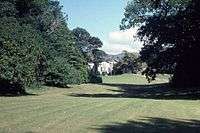
Viceroy of India, 1888–1894
Lord Lansdowne was appointed Viceroy of India in the same year he left Canada. The viceroyalty, which he held from 1888 to 1894, was offered to him by the Conservative prime minister Robert Gascoyne-Cecil, 3rd Marquess of Salisbury and marked the pinnacle of his career. He worked to reform the army, police, local government and the mint. There was a small local rebellion in 1890, which was quickly suppressed, Lansdowne securing the death penalty for the leader in the face of considerable opposition from home. His attempt in 1893 to curtail trial by jury was, however, over-ruled by home government. He returned to England in 1894.He was primarily responsible for creating disturbance between HIndu and Muslims when he was the Viceroy of British India.[4]
Secretary of State for War, 1895–1900
Upon his return, as a Liberal Unionist, he aligned with the Conservative Party. The Prime Minister, Lord Salisbury, appointed Lord Lansdowne to the post of Secretary of State for War in June 1895. The unpreparedness of the British Army during the Second Boer War brought calls for Lansdowne's impeachment in 1899. His biographer, Waite, considers that he was unjustly criticized for British military failures: ever the good minister, he took full responsibility and said nothing.[2]
Secretary of State for Foreign Affairs, 1900–1905
After the Unionist victory in the general election of October 1900, Salisbury reorganised his cabinet and gave up the post of Foreign Secretary, appointing Lansdowne to replace him. Lansdowne remained at the Foreign Office under Salisbury's successor Arthur Balfour. As British Foreign Secretary, he signed the 1902 Anglo-Japanese Alliance at his London home (the back half of which still exists as the Lansdowne Club) and negotiated the 1904 Anglo-French Entente Cordiale with the French foreign minister, Theophile Delcassé.
The Big Revolver
On 15 June 1903, he made a speech in the House of Lords defending fiscal retaliation against countries with high tariffs and whose governments subsidised products for sale in Britain (known as 'bounty-fed products', also called dumping). The retaliation was to be done by threatening to impose tariffs in response against that country's goods. His Liberal Unionists had split from the Liberals, who promoted Free Trade, and the speech was a landmark in the group's slide towards Protectionism. Landsdowne argued that threatening retaliatory tariffs was similar to getting respect in a room of armed men by showing a big revolver (his exact words were "a rather larger revolver than everybody else's"). The "Big Revolver" became a catchphrase of the day, often used in speeches and cartoons.
Subsequent career

In 1903, Lord Lansdowne became the leader of Unionists (Conservative and Liberal Unionist peers) in the House of Lords.[2] This was followed shortly by the Liberal victory in the January 1906 general elections. In his new role as head of the opposition Peers, he was instrumental in the Unionist leader Arthur Balfour's plans to obstruct Liberal policies through the Unionist majority in the upper house. Although he and Balfour both had some misgivings, he led the Lords to reject the People's Budget of 1909. After the Liberals won two elections in 1910 on the pledge to reform the House of Lords and remove its veto power, and after a series of failed negotiations in which Lansdowne was of key importance, the Liberals moved forward to end the Lords veto, if necessary by recommending to the King that he create hundreds of new Liberal peers. Lansdowne and the other Conservative leaders were anxious to prevent such an action by allowing the bill, distasteful as they found it, to pass, but soon Lansdowne found that he could not count on many of the more reactionary peers, who planned on a last-ditch resistance. Ultimately, enough Unionist peers either (like Lansdowne himself) abstained from the vote ("hedgers") or even voted for the bill ("rats") to ensure its passage into the Parliament Act 1911.
In the following years, Lansdowne continued as Opposition Leader in the Lords, his stature increasing when Balfour resigned as party leader and was replaced by the inexperienced Andrew Bonar Law, who had never held cabinet office. In 1915, Lansdowne joined the wartime coalition cabinet of H. H. Asquith as a Minister without Portfolio, but was not given a post in the Lloyd George government formed the following year, despite Conservative pre-eminence in that government. In 1917, having discussed the idea with colleagues for some time with no response, he published the controversial "Lansdowne Letter", which called for a statement of postwar intentions from the Entente Powers. He was criticised as acting contrary to cabinet policy.
When Lansdowne died his estate was valued at probate at £1,044,613 in land, with another £233,888 pounds in other assets.
Family

Henry Petty-FitzMaurice married Lady Maud Evelyn Hamilton, a daughter of James Hamilton, 1st Duke of Abercorn and his wife Lady Louisa Jane Russell, V.A., daughter of John, 6th Duke of Bedford in 1869. The couple went to Canada in October 1883 with their niece Lady Florence Anson (Streatfield) and their children:
- Lady Evelyn Emily Mary Petty-Fitzmaurice (27 August 1870 – 2 April 1960)
- Henry William Edmund Petty-Fitzmaurice, Earl of Kerry (14 January 1872 – 5 March 1936)
- Lord Charles George Francis Petty-Fitzmaurice (12 February 1874 – 30 October 1914)
- Lady Beatrix Frances Petty-Fitzmaurice (25 March 1877 – 5 August 1953)[5]
Honorific eponyms

- Geographic locations
-
 The town of Lansdowne in India
The town of Lansdowne in India -
 Ontario: Lansdowne Avenue, Toronto
Ontario: Lansdowne Avenue, Toronto -
 Ontario: Lansdowne Street, Sudbury
Ontario: Lansdowne Street, Sudbury -
 Ontario: Lansdowne Park, Ottawa
Ontario: Lansdowne Park, Ottawa -
 Ontario: Lansdowne Street, Peterborough
Ontario: Lansdowne Street, Peterborough -
 Ontario: Lansdowne Avenue, Sarnia
Ontario: Lansdowne Avenue, Sarnia -
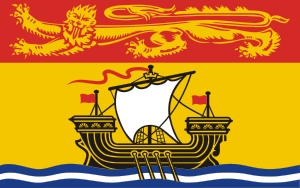 New Brunswick: Lansdowne Street, Campbellton
New Brunswick: Lansdowne Street, Campbellton -
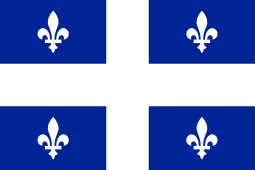 Quebec: (Upper) Lansdowne Avenue, Westmount
Quebec: (Upper) Lansdowne Avenue, Westmount -
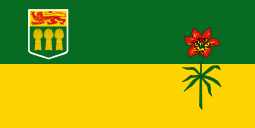 Saskatchewan: Lansdowne Avenue, Imperial
Saskatchewan: Lansdowne Avenue, Imperial -
 : Mount Lansdowne, Yukon 60°30′36″N 134°33′20″W / 60.509906°N 134.555459°W
: Mount Lansdowne, Yukon 60°30′36″N 134°33′20″W / 60.509906°N 134.555459°W -
 Lansdowne Road, Calcutta, India.
Lansdowne Road, Calcutta, India. -
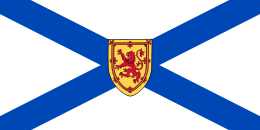 Lansdowne, Nova Scotia
Lansdowne, Nova Scotia
- Schools
-
 Ontario: Lansdowne Public School, Sudbury
Ontario: Lansdowne Public School, Sudbury -
 Ontario: Lord Lansdowne Public School, Toronto
Ontario: Lord Lansdowne Public School, Toronto -
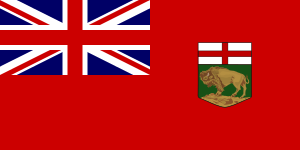 Manitoba: Lansdowne Public School, Winnipeg
Manitoba: Lansdowne Public School, Winnipeg
- Bridges
-
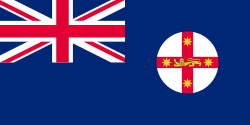 Lansdowne Bridge, Lansdowne, New South Wales, Australia - a bridge built in 1834-5 and has the largest span of all Australian masonry bridges
Lansdowne Bridge, Lansdowne, New South Wales, Australia - a bridge built in 1834-5 and has the largest span of all Australian masonry bridges -
 Lansdowne Bridge, Rohri, Sindh, Pakistan - a rigid girder bridge built 1879-1887 used by railway traffic
Lansdowne Bridge, Rohri, Sindh, Pakistan - a rigid girder bridge built 1879-1887 used by railway traffic
- Buildings
-
 Lansdowne Building, Mysore, Karnataka, India c. 1892 a market being repaired and restored after partial collapse in 2012
Lansdowne Building, Mysore, Karnataka, India c. 1892 a market being repaired and restored after partial collapse in 2012 -
 Lansdowne Court, Calcutta, India - residential development
Lansdowne Court, Calcutta, India - residential development
- Market
-
 Lansdowne Market, Calcutta, India.
Lansdowne Market, Calcutta, India.
- Station
- Lansdowne (TTC), Toronto
References
- ↑ Donald Creighton, John A. Macdonald: The Old Chieftain (1955) 2: 355-56
- 1 2 3 4 5 6 biographica.ca: "PETTY-FITZMAURICE, HENRY CHARLES KEITH, 5th Marquess of LANSDOWNE"
- ↑ http://www.cascapedia.org/fishingcamps/index.htm
- ↑ Gerard J. Lyne: "The Lansdowne Estate in Kerry under W.S. Trench 1849–72", Geography Publications, Dublin 2006, p. xlii–xliii, ISBN 0-906602-81-5
- ↑ Morgan, Henry James Types of Canadian women and of women who are or have been connected with Canada : (Toronto, 1903)
Further reading
- Sir George Forrest (1894). The administration of the Marquis of Lansdowne as Viceroy and Governor-general of India, 1888–1894.
- Edmond George Petty-Fitzmaurice Fitzmaurice (1st Baron) (1912). Life of William, earl of Shelburne, afterwards first marquess of Lansdowne. vol 1. Macmillan.
- Edmond George Petty-Fitzmaurice Fitzmaurice (1st Baron); William Petty Lansdowne (Marquis of) (1876). Life of William, Earl of Shelburne, afterwards first Marquess of Landsdowne: with extracts from his papers and correspondence. vol 2. Macmillan.
External links
| Wikimedia Commons has media related to Henry Petty-FitzMaurice, 5th Marquess of Lansdowne. |
| Wikisource has the text of a 1922 Encyclopædia Britannica article about Henry Petty-Fitzmaurice, 5th Marquess of Lansdowne. |
- Hansard 1803–2005: contributions in Parliament by the Marquess of Lansdowne
- Biography at the Dictionary of Canadian Biography Online
- Website of the Governor General of Canada
- 1903 illustrated article with photo of Petty-Fitzmaurice
- Photograph: The Marchioness of Lansdowne circa 1885. McCord Museum
.svg.png)